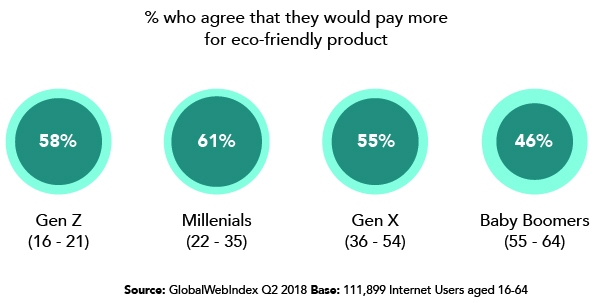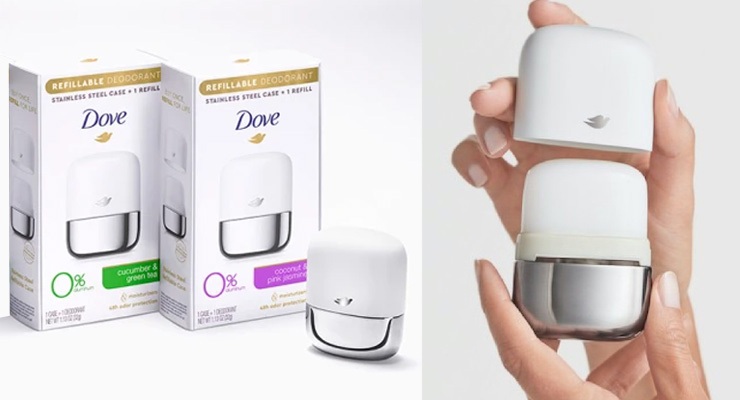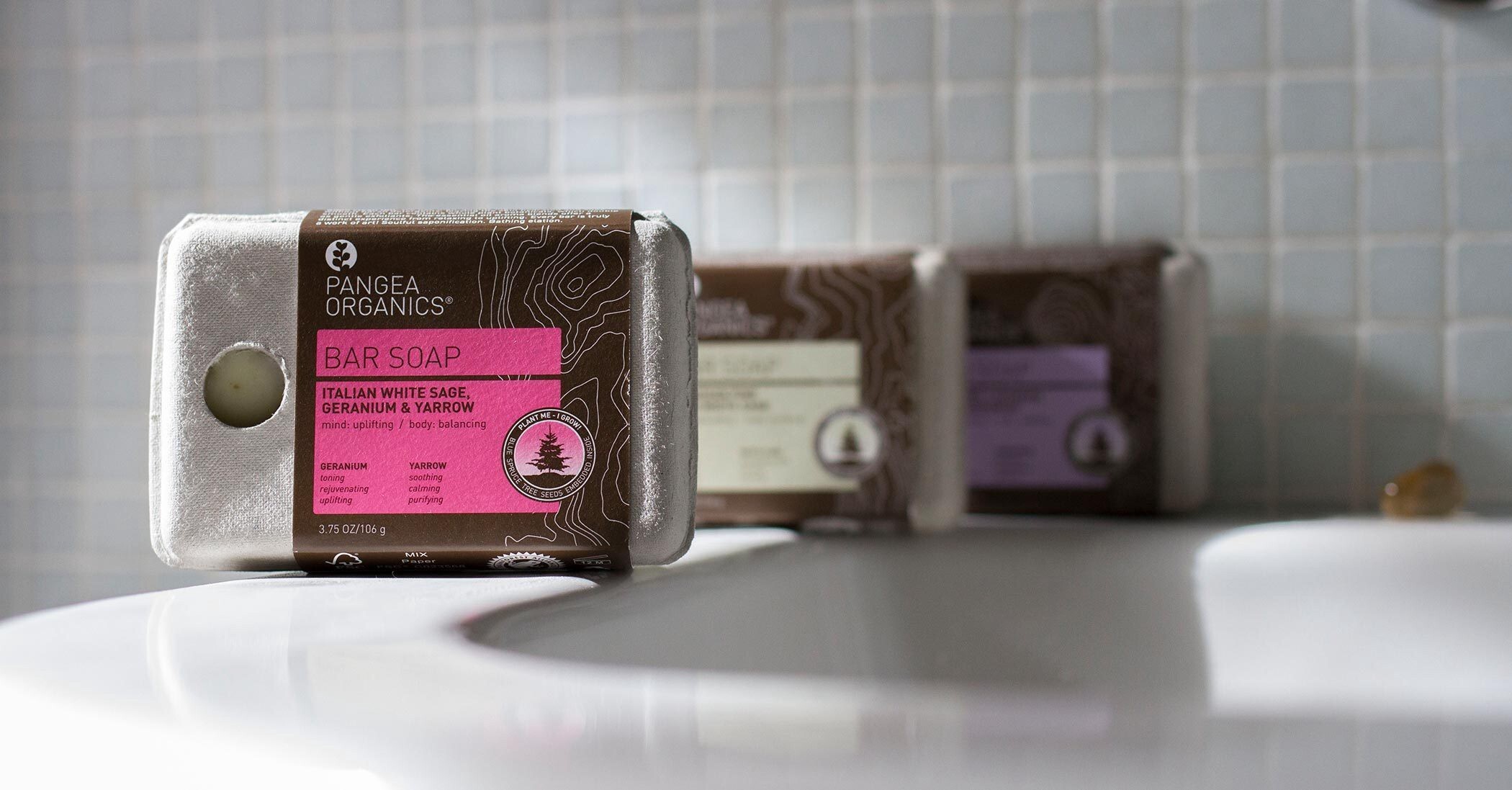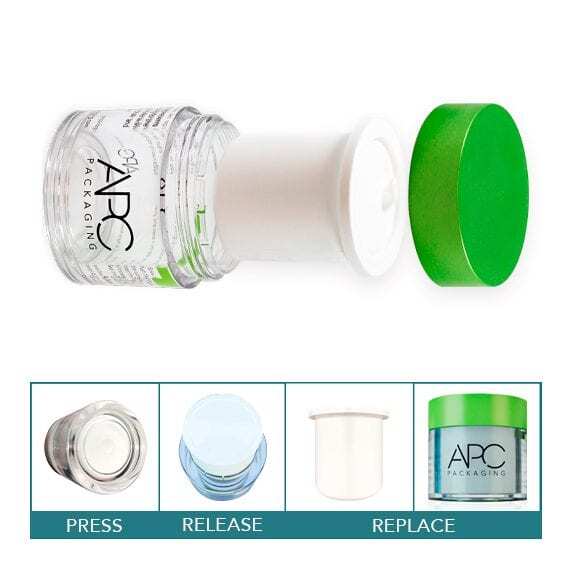We are all consumers in the world we live in, and so we make purchases daily. Across the board, our purchased goods come in some form of packaging to secure the contents and protect them from Environmental contamination.
Moreover, packaging sets brands apart while presenting the consumer with important information. Hence, all companies who leverage packaging consider sustainability a crucially important issue, no matter where they place themselves in the supply chain.
Before starting the article, let’s take a look at some of the critical stats:
• 51% of Millennials scrutinize the packaging before purchasing for sustainability claims.
• 66% of consumers have abstained from a particular product or brand for environmental reasons.
• 70% of consumers are likely to get influenced by eco-friendly packaging.
• 70% of consumers have bought an eco-friendly product despite little costly.
These figures shed light on a paramount concern, which is called sustainable packaging, and in this article, we will cover sustainable packaging in detail. So, let’s get started.

What is Sustainable Packaging?
When it comes to the definition of sustainable packaging, we can think of it as packaging manufactured out of sustainable materials using energy from renewable sources. Throughout its life cycle, the packaging should remain effective and safe. Later on, its component elements should continue getting entirely recyclable. In a way, it creates a closed-loop of manufacturing and usage.
Basically, sustainable packaging is eco-friendly and does not add to the further exhaustion of natural resources. However, sustainable packaging should continue meeting the business market’s requirements concerning cost, safety, and performance.
“The US environmental protection agency refers to sustainability as creating and maintaining conditions suitable for humans and nature in productive harmony. It should fulfill the economic, social, and other requirements of present and future generations.”
Importance of Sustainable Packaging
One of the most significant challenges is the impact of humankind on the natural world we face today and in the years ahead. Our global spread of economic development and expanding population are mounting inflating pressure on the world’s resources.
Meanwhile, sustainable packaging is vital since it slashes the ecological footprint, from the initial stage until the last in the product’s life-cycle. It helps both the consumer and producer reduce their environmental impact. Here we see through more benefits of sustainable packaging.
SUSTAINABLE PACKAGING CAUSES A REDUCTION IN CARBON FOOTPRINT

We call carbon footprint the amount of carbon dioxide and other carbon compounds released because of fossil fuels’ consumption by a particular person or group. Are you skeptical about climate change? Well, you can further push the drive to diminish the negative impact of carbon footprint when your business decides to implement sustainable processes and materials.
Besides, you can reduce carbon emissions by curtailing the amount of packaging you use to complete your finished product. All in all, it is a great thing.
Your packaging materials’ weight is directly proportional to the increase in the amount of energy required to produce your finished goods. It also has an impact on the vigor needed to ship them to the shop or consumer. But, you can positively impact your carbon footprint by switching to a lighter weight material.
GROW YOUR CUSTOMER BASE AND IMPROVE BRAND LOYALTY
If you adopt sustainable packaging, it can assist you with acquiring more customers and boost loyalty than you are at now. Different studies have indicated that consumers are progressively figuring in sustainability while picking which brands to work with.
As per research by Nielsen, 48% of consumers are happy to change their consumption propensities to bring down their impact on the climate.
SUSTAINABLE PACKAGING DECREASES THE USE OF RESOURCES
The people who are unaware that plastics have the upper hand in reducing the carbon footprint hold a negative view of flexible plastic packaging. In reality, while the user of sustainable packaging reduces the amount of energy it takes to package a product, it not only reduces the carbon footprint but also diminishes solid waste, electricity, water usage, and other emissions.
SUSTAINABLE PACKAGING IS ABSENT OF ALLERGENS AND TOXINS
Increasingly, many more people want to know the materials used in the packaging and the potential harm it can cause to human health. The good news is that most sustainable packaging options are allergy-free and non-toxic.
It is one of the growing concerns consumers take into consideration when purchasing the products. Therefore, going with sustainable packaging increases the likelihood of your sales skyrocketing.
SUSTAINABLE PACKAGING CAN SAVE YOU MONEY
Ultimately, sustainable packaging can save you on shipping costs since eco-friendly products tend to get packaged in more lightweight materials. A thoughtful logistics plan will produce a positive impact on profits. Your customer will also acknowledge your forethought into sustainability by an increase and buzz surrounding your brand.

It is not an overnight thing to make your packaging sustainable, though it is worth looking into how to ensure a plan based on sustainability with short- and long-term goals. While reducing your carbon footprint will increase the outreach of your brand into new market segments.
A study of 141 organizations, members of the World Business Council for Sustainable Growth, discovered that companies utilizing sustainable methodologies played better than their partners and delivered about 4% higher margins.
Are there any Criteria for
Sustainable Packaging?
The sustainable packaging coalition (SPC) outlines a shared vision and guidelines for improving packaging. Throughout the life of the packaging industry, people widely accept their definition, according to SPC. Here we see through eight criteria of SPC that define sustainable packaging.
• For communities and individuals, sustainable packaging is safe, beneficial, and healthy throughout its life cycle.
• For both performance and cost, it should meet market criteria.
• Sustainable packaging should get recycled, transported, manufactured, and sourced using renewable energy.
• It should optimize the use of recycled or renewable source materials.
• It should get manufactured using best practices and clean production technologies.
• Sustainable packaging should get made from materials healthy in all likely end-of-life scenarios.
• It should get designed physically to optimize energy and materials.
• Sustainable packaging should get recovered effectively and used in biological and industrial closed-loop cycles.
ISO Standards
In the packaging industry, there are many over-arching ISO standards. Also, there are specific standards associated with packaging within particular sectors where regulations are more rigorous.
ISO 9001
For many businesses, ISO 9001 is a significant quality management standard. For packaging manufacturers, it conveys a definite signal to consumers that you can manufacture ISO-quality packaging.
Essentially, it means that it is a fully integrated quality management system that your company runs. To drive optimal performance throughout your business, your management team can use the ISO 9001 standard’s quality management principles.
ISO 14001
ISO 14001 shows a commitment to the environment by a company. For many packaging companies, environmental impact is a vital concern. So, environmental best practices get supported by the ISO 14001 accreditation.
It means that companies are actively seeking ways to reduce waste. It might include designing packaging with minimum material usage, efficient working processes, and employing recyclable materials where possible.
There are also specific ISO standards linking to packaging within particular industries. Here we see through them as well.
ISO 15378
For medicinal products, ISO 15378 is the standard relating to primary packaging materials specifically.
ISO 13127
This standard is relevant to companies that manufacture child-resistant packaging.
ISO 13274
13274 is the standard that deals with transport packaging for dangerous goods.
Future of Sustainable Packaging
“The United Nations highlights that we would need the correspondence of almost three planets to sustain current lifestyles since the population of the world may reach 9.6 billion by 2050.”
On several fronts, the packaging industry is improving the green credentials of many kinds of businesses. Let’s go through a few of them.
Sustainable packaging machines
One of the significant elements of the sustainable packaging movement is energy-efficient packaging machines. These machines consume less electricity and water in the packaging process to diminish the environment’s impact. Ideally, packaging should get manufactured using clean production technologies and renewable energy without the use of toxic substances.
Sustainable packaging materials
Like traditional packaging materials, sustainable packaging materials also provide the same functional aspects. Undoubtedly, they need to protect the product. Simultaneously, packaging materials also have to facilitate handling, transport, and storage to avoid any environmental impact.
Flexible packaging
Flexible packaging uses pouches and bags or some other non-rigid packaging structures. The flexible packaging uses fewer raw materials by combining the best quality of paper, plastic, aluminum, and film. Simultaneously, it provides reliable protection for products.
For extending shelf life, flexible packaging is handy. Also, it offers customers a convenient re-sealable package to use later. To preserve the remaining amount of the product inside the package, it eliminates the requirement for other containers or disposable bags.
Looking forward to a greener future
The enactment of sustainable materials and packaging practices is increasing relentlessly. There is a lot to be done, which includes understanding public mentalities to sustainability and the advancement of recycling resources. There should be more clarity on which materials are reusable.
We can hope to see critical advancements in materials and developing recycling infrastructure. The opportunities for a greener future are continually evolving.
Now Brands are Adopting
Sustainable Packaging
Let’s see some examples of companies that have adopted sustainable packaging.
SHEYN

Austrian-based brand, Sheyn, sells custom made jewelry. They created special packaging with an environmental, minimalist style, a perfect example of “less is more.”
Sheyn formulated amazingly detailed designs in a minimalist style using a simple kraft mailer box. It creates an image of their Elkie pendant when you unfold the box.
Using a single-color print and a 90% recycled paper box, they created this stunning design. When it comes to packaging, it will come on top of the list of an excellent representation of the less is more principle.
UNILEVER

Unilever stands for the circular economy approach. It is stimulating a better infrastructure for recovery and recycling by reconsidering the end of the life-cycle for hardly-recycled materials. Its sustainable living plan focuses on saving water from plastic and responsible consumption.
Recently, Dove launched its refillable deodorant, which is ensured to endure forever. This launch belongs to Unilever’s mission to maintain the environment and create a closed-loop economy.
They are determined to reduce the weight of their packaging by a third. By 2025, all its plastic packaging will turn 100% compostable and reusable.
PANGEA ORGANICS

It is already an environmentally-minded decision to use bar soap over bottled soap since it reduces plastic waste.
One step further, Pangea organics created packaging that can grow trees. They add tree seeds into the mixture after using water and recycled newspaper to mold fiber boxes. After use, you can plant your packaging.
It is an excellent example of complementary packaging to a green product, while it is also a super creative eco-friendly packaging idea.
What does APC Packaging
do to achieve it?
We comply with the best practices which make the most sense in the face of climate change.
Design recyclable packaging
First and foremost, we resist using materials that are not standard or can cause issues during recycling, for that matter. We follow established recycled processes to ensure our design complies with them.
Simultaneously, we create packaging easy to disassemble. Also, we remove blister packs wherever possible and use the corrugated board in place of cardboard. Alongside, we avoid using ink, colorants, and other non-recyclable materials.
Source sustainable materials
We understand that eco-friendly packaging design lies in the energy and raw materials used to create it. Therefore, we bring in the use of renewable resources wherever possible. As a result, we can stop depleting scarce raw materials.
Reduce the use of hazardous substances
We eliminate using any raw materials and products that cannot be recycled or reusable to achieve a sustainable design. It includes industrial solvents in bleaches, heavy materials like cadmium, hexavalent chrome, & lead, coatings, adhesives, and PVC.
Our Sustainable Packaging Options
AIRLESS REFILLABLE SYSTEM
Our new Airless Refillable System ensures brands claim sustainability instantly. Our patented refillable system uses PP (polypropylene). Also, by utilizing up to 75% PP PCR (post-consumer resin) by package weight for APC’s 50ml and up to 100% PP PCR for the 30ml version.
By adopting APC’s Refillable Airless System & utilizing PP PCR in place of a conventional airless package, your brand can immediately claim a Sustainable Package. The ARS (Airless Refillable System) application is both budget-friendly and allows for speedy-transformation to achieve sustainable goals. More so, it gets done conveniently and quickly to bring your product to market quickly.
Additionally, an airtight environment preserves your formulations. It is essential to highlight airless packages are a growing trend in the personal care and cosmetic markets. ARS Airless contributes to reducing plastic pollution. It also ensures ease-of-use and costs less.
REFILLABLE JAR
For the skincare industry, our patented refillable jar is an innovative step toward sustainable packaging. It ensures meeting your sustainable requirements.
The refillable jar is the ideal synthesis of sustainability and luxury. The JRA jar series can be produced with a PET outer jar and a PP inner jar and cap from 100% virgin fully recyclable to 100% PCR for an even more sustainable approach.
With our refillable systems (airless & jar), a brand’s needs for purity & safety are met, keeping the consumer in mind and maintaining ease of use.
Get in touch with us now to know more about how we deliver luxury, sustainable packaging for your business.
Not able to find the packaging solution that you need? APC Packaging offers many more options including private molds.
Request a free consultation with one of our packaging experts.
For all other inquiries, please contact Purchasing, Human Resources, Logistics or Marketing.
